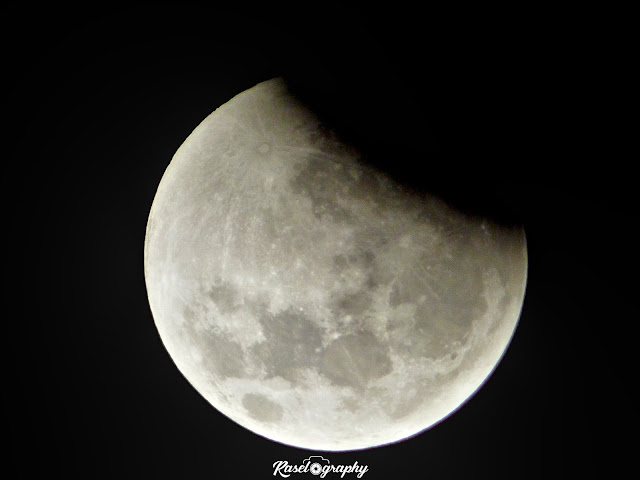Blood Moon - Lunar Eclipse 27 JULY 2018 from Melbourne Sky
The full moon on the night of July 27-28, 2018, presents the
longest total lunar eclipse of the 21st century (2001 to 2100). The total phase
of the eclipse – called the totality – spans 1 hour 42 minutes and 57
seconds. That’s in contrast to the shortest total lunar eclipse of this
century, which occurred on April 4, 2015, and lasted
4 minutes and 48 seconds. And it’s in contrast to 2018’s other total lunar
eclipse – on January 31, 2018 –
whose totality lasted 1 hour and 16 minutes.
A partial eclipse precedes and follows the total phase of the
eclipse, each time lasting 1 hour and 6 minutes. So, from start to finish – on
July 27-28, 2018 – the moon spends nearly 4 hours (3 hours and 55 minutes)
crossing the Earth’s dark umbral shadow. Wow!
That’s a long eclipse.
What causes a long-lasting total lunar eclipse?
For an
especially long-lasting total lunar eclipse of 1 hour and 43 minutes to occur,
the moon has to pass through the central part of the Earth’s shadow. The
previous total lunar eclipse on January 31, 2018, didn’t last as long (1 hour
and 16 minutes) because the moon passed to the
south of the shadow’s center; and the next total lunar eclipse on January 21, 2019, won’t be as long either (1
hour and 2 minutes) because it’ll pass to the north
of the shadow’s center.
In 2018, the
July full moon and July lunar apogee –
the moon’s most distant point from Earth in its monthly orbit – both fall on
the same date: July 27, 2018. Therefore, the July 2018 full
moon showcases the most distant and smallest full moon of the year. Sometimes
called an apogean full moon (or micro-moon or mini-moon), this smaller and
slower-moving full moon takes more time to cross the Earth’s shadow than does a
full moon that’s closer to Earth and moving faster in orbit. That’s why a full
moon at or near lunar apogee adds to the duration of a total lunar eclipse.
The longest
possible total lunar eclipse is 1 hour and 47 minutes. In fact, the longest
total eclipse of the 20th century (1901 to 2000) occurred on July 16, 2000, with a duration of 1 hour and
46.4 minutes. That’s because, at greatest eclipse, the center of the lunar disk
aligned almost perfectly with the center of the Earth’s shadow.
It’s no
coincidence, by the way, that the extra-long total lunar eclipses of July 16,
2000, and July 27, 2018, belong to the same Saros
series and are separated by one Saros
period (18.031 years).
On July 27,
2018, the center of the lunar disk will swing a tiny bit north of the shadow’s
center, so this total lunar eclipse with a duration of 1 hour and 43 minutes
will be a few minutes shy of the maximum duration possible (1 hour and 47
minutes). Even so, this July 2018 total lunar eclipse counts as a whopper,
giving us the longest total lunar eclipse of the 21st
century.
The longest
total lunar eclipses of the 20th and 21st centuries both take place in July,
which is of consequence. That’s because yearly, in early July, the Earth swings
out to aphelion – its farthest point from the
sun for the year.
At aphelion,
the Earth’s dark umbral shadow reaches its maximum length (and width) for the
year. All else being equal (moon’s distance and centrality of eclipse), the
greater width of the Earth’s umbra in July means a longer total lunar eclipse.
Therefore, long-lasting total lunar eclipses tend to take place in a Northern
Hemisphere summer (or Southern Hemisphere winter) because the umbra is wider at
this time of year.
The full moon
will plunge deeply into the Earth’s shadow on the night of July 27-28, 2018.
Depending on atmospheric conditions, this could be an
especially dark total eclipse, though you won’t know for sure unless
you look!











Love it!
ReplyDelete